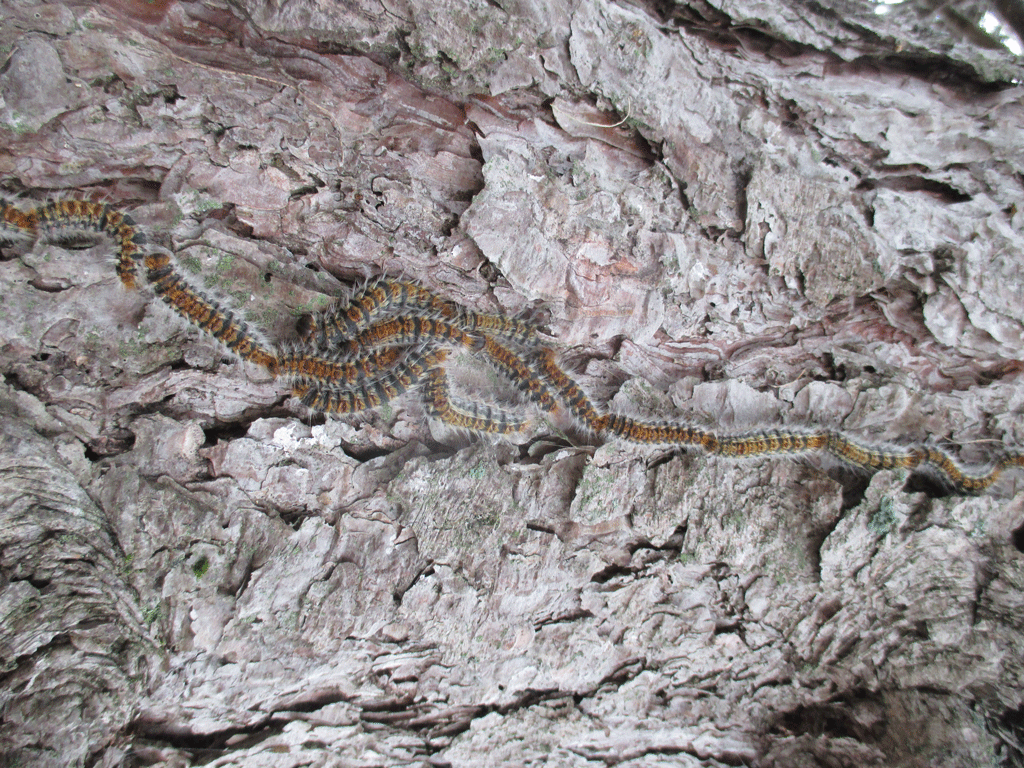Processionary

Infestations of oak processionary moth caterpillars have only been an annual problem in the northern half of the continent in recent years. The oak processionary caterpillar is originally a southern European species but has been spreading northwards due to climate change. Processional definition is - a book containing material for a procession. How to use processional in a sentence.
**This organism is not known to be present in the United States but poses a threat. The oak processionary moth (OPM), Thaumetopoeaprocessionea, is not known to exist in the United States but may pose a serious threat to oaks and other trees if introduced. The larvae of this high-consequence defoliator strip trees bare of leaves, making them vulnerable to other pests, diseases, and environmental stressors. These larvae may be seen at dusk, traveling in long nose-to-tail processions to feed in the canopy, and again at dawn when they return to their nests.
As they consume leaves, oak processionary moths cause damage far beyond tree decline. Severe infestations could dramatically alter ecosystems by reducing biodiversity, degrading critical habitat, and endangering threatened plants. Repeat defoliation can decrease timber yields and quality, impacting timber and forestry industries. If trade quarantines were enacted, these industries would be further impacted.

OPM larvae can also pose a threat to people, pets and livestock. OPM larvae have tiny hairs on their bodies that cause severe skin irritation and respiratory reactions. Contact with larval hairs and nests has been associated with symptoms ranging from severe rashes to anaphylaxis. As it causes reactions in people and pets, an OPM infestation in the U.S. could affect the outdoor recreation and tourism industries.
Processionary Moth
Global trade and travel provide the most common pathways for invasive pests, and OPM is no exception. Sometime prior to 2006, the moth was introduced to the United Kingdom, possibly on imported timber. Such introductions can easily go unnoticed since eggs are cryptic and could accidentally be transported on host material intended for planting.

If introduced, OPM could spread unknowingly to new areas. OPM—as well as other invasive plant pests—could easily be transported to new areas on infested plants and firewood. Thanks to their strong ability to fly, adult moths can spread rapidly once established, travelling up to 3.5 miles (5.6km) per year.
The moth’s main host is oak, but when OPM populations are high, larvae have been known to feed on nearby beech, birch, hawthorn, hornbeam, walnut, and black locust. Despite having a range of food sources, OPM are only known to complete their life cycle on oak and beech.
Although defoliation may draw your attention, oak processionary moth should be identified through direct evidence of the insect itself. Since OPM adults and larvae look similar to some native moths, seek confirmation from a diagnostician for identification.
From late spring to summer, watch for OPM’s most recognizable behavior: the unique nose-to-tail processions in which they travel at dusk to feed and at dawn to return to their nests. Hundreds to thousands of larvae may be spotted making this daily commute on oaks. Processionary behavior begins as the larvae mature, build nests on branches and trunks, and lighten in body color from brown to grey. Be careful and do NOT touch! OPM larvae grownoxious hairs that cause skin and respiratory irritation!
Monitor oaks for conspicuous, white or orange-brown nests located on trunks or the undersides of branches. White silk nests may be the size of a tennis ball or larger and turn orange-brown over time, sometimes dislodging from the tree. If you find something that resembles an OPM nest, doNOTtouch it! Nests are made of poisonous hairs just like the larvae.
This well-known oak tree parasite is a caterpillar that devours the leaves, until it gathers to form a nest that looks like a spider web.
The scientific name is Thaumetopoea processionea and it’s also called oak processionary moth.
Solution to treat against oak processionary
There is practically no available effective anti-parasite treatment. The only solution is to prevent caterpillars from spreading to other oak trees.
Processionary Meaning
- Locate and destroy nests which are a wispy white color, as if made from spider webs.
- In some areas such as England, authorities prefer that you report the nests to the local forestry bureau. They will dispatch a team to rid you of the nest.
To preserve and protect surrounding trees, cut off branches where nests form and destroy them.
- Also read our page on caterpillar control